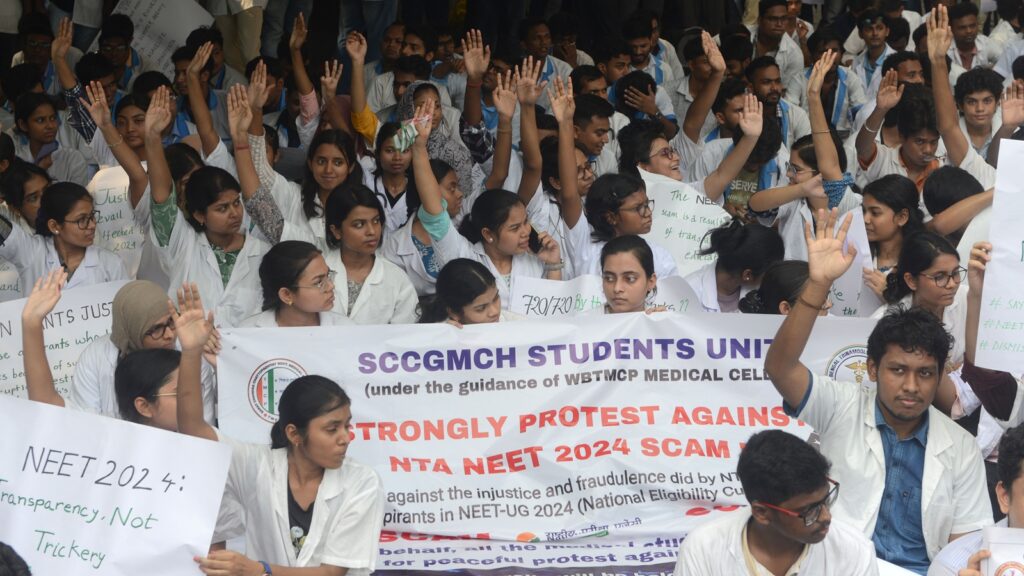In just five days, the government has cancelled one exam, postponed two more and fired the head of the agency that administers tertiary entrance exams. Meanwhile, the controversy over the results of medical school entrance exams is intensifying. The impasse created by last week's government decision has undoubtedly increased anxiety for many students.
Be it the entrance examination system for educational institutions or the open admissions system, controversy has raged for a long time. The developments since early June are no exception. The government has set up a committee to propose measures to perfect the system. This is a long-awaited measure. The diversity of young people taking public exams has been steadily increasing. This expansion of the pool of aspirants bodes well for democracy. However, when the efforts of young people who have studied hard for the exams are undermined by a system that cannot check for leaks or cheating, it leads to dissatisfaction and loss of trust. The committee must find a way to restore this trust.
Hyper Competition
But flaws in the exam system are only part of the problem. The main reason exams have become overly competitive is a lack of opportunities for a widening pool of applicants, whether in education or in the workplace. This year, 2.4 million students sat for the exams, competing for just over 100,000 undergraduate medical places.
Of course, society places an absurd premium on medical and engineering courses and state universities. Perhaps this is why there is a desperate exodus of students to places with tougher challenges, such as the countries that made up the former Soviet Union. And perhaps this is why parents of students who had missed their competitive exams fainted outside the exam centre last week.
But there is another view. The preference for medicine, engineering and government jobs is an indication that diverse opportunities are not adequately meeting people's demand. The number of government jobs has been stagnant for at least a decade, and the rise in institutions offering quality education at affordable costs has not kept pace with demand. A study published last year by the Centre for Sustainable Employment at Azim Premji University put the unemployment rate for graduates under 25 at 42.3 percent in 2021-22.

All this creates the conditions for the jobs and exams mafia to thrive. Hundreds of thousands of students spend their most promising years enrolling in coaching classes that do nothing but teach them rote learning. Needless to say, this demand-supply gap hits the underprivileged in terms of caste, class, gender and geography the hardest.
Different approaches
India is a young country. But having a young, large working-age population does not automatically translate into a demographic dividend. This population should not just be part of the workforce but should be productively employed in jobs that fulfill their aspirations. A country with a young population whose aspirations are not being met is not a good country for those in power.


India has about 20 more years to enjoy its demographic dividend, but by the time the current government finishes its term, the best time to reap this advantage will likely be over.
To resolve exam confusion, it is first and foremost essential to widen the employment and education pool and to improve skills. Piecemeal measures alone will not be enough, but at the same time, governments must be extremely careful not to exacerbate historical disadvantage. In a diverse country, a one-size-fits-all approach may not be appropriate to fulfil the aspirations of young people and ensure a creative workforce. To meet this responsibility, governments need to listen to all voices, even those that may appear to be dissenting on the surface. Opposition parties, whose presence has increased significantly, also need to do more than engage in disruptive politics.
But the overwhelming responsibility to do things differently rests on governments.
Until next time
Kaushik Das Gupta
© Indian Express Ltd.
First uploaded on: 23 June 2024 19:54 IST



